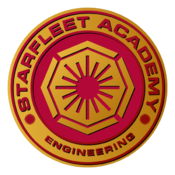Spore Drive
| Academy Library |
|---|
The Spore Drive, otherwise known as a displacement-activated spore hub drive or s-drive, is an advanced form of propulsion technology developed in the mid 23rd century by Starfleet, on the research ships USS Discovery and USS Glenn. It is an organic propulsion system utilizing mycelium spores harvested from Prototaxites stellaviatori to jump or leap across the mycelial network. During such jumps, the ships were not in normal space but in the mycelial plane, a discrete layer of subspace. Fleet DeploymentOperations GuideBasics of Quantum SlipstreamSpeedThe experimental Spore Drive has no theoretical speed limit. From an outside perspective, the ship disappears and reappears in another location instantly. Drive staminaAt its current technological advancement, Starfleet slipstream drives can only be operated for a maximum of approximately 12 hours before initiating auto-shutdown procedures. This allows a ship to travel 3,600 light years from where they started. Warm-up timeStarfleet slipstream drives require a warm-up cycle before they can be engaged. This warm-up cycle requires 40 minutes of preparation by a trained Starfleet Engineering Officer. Cool-down timeOnce the drive is deactivated, it cannot be reactivated for at least 36 hours. Any attempt to warm-up the drive before the cool-down cycle has completed could result in an unstable slipstream. Upgrade cycleAs the technology rolls out to the fleet, it will be necessary for ships to return to spacedock, on average, every two years for a minor refit and hull inspection to ensure that the slipstream drives are not compromising the long-term integrity of the fleet. |



